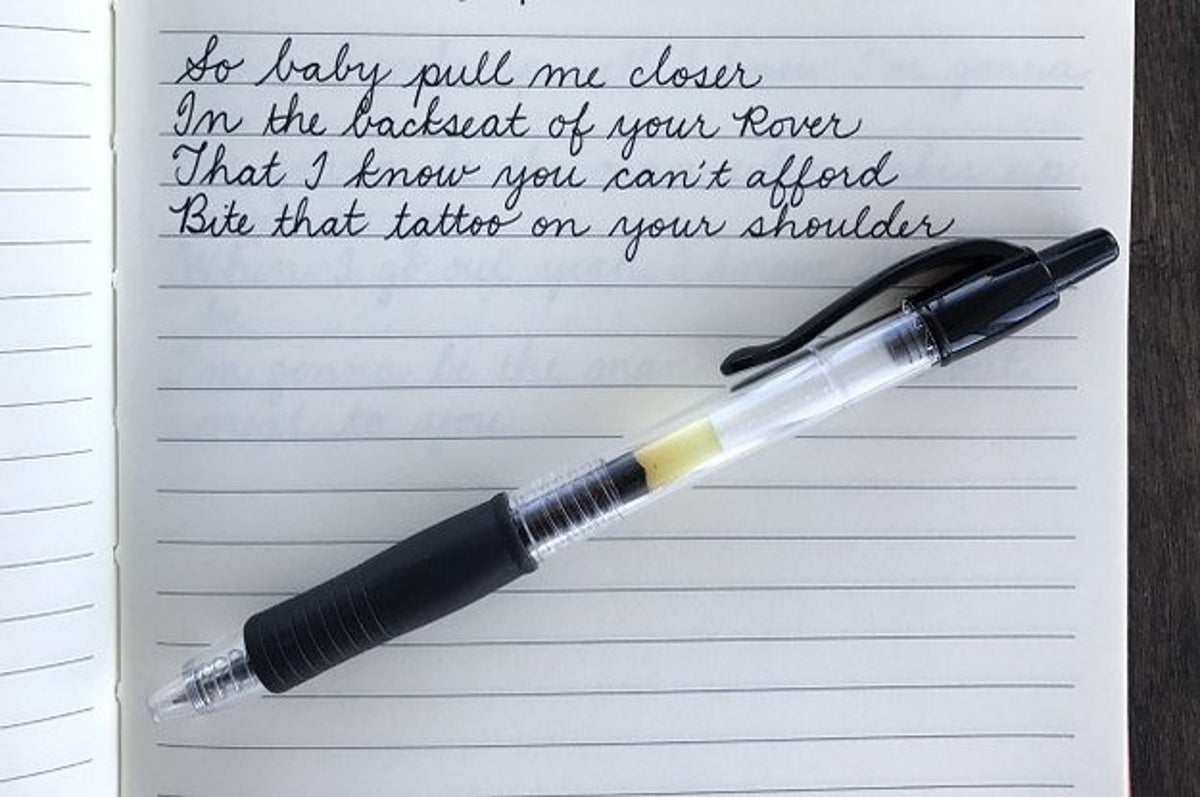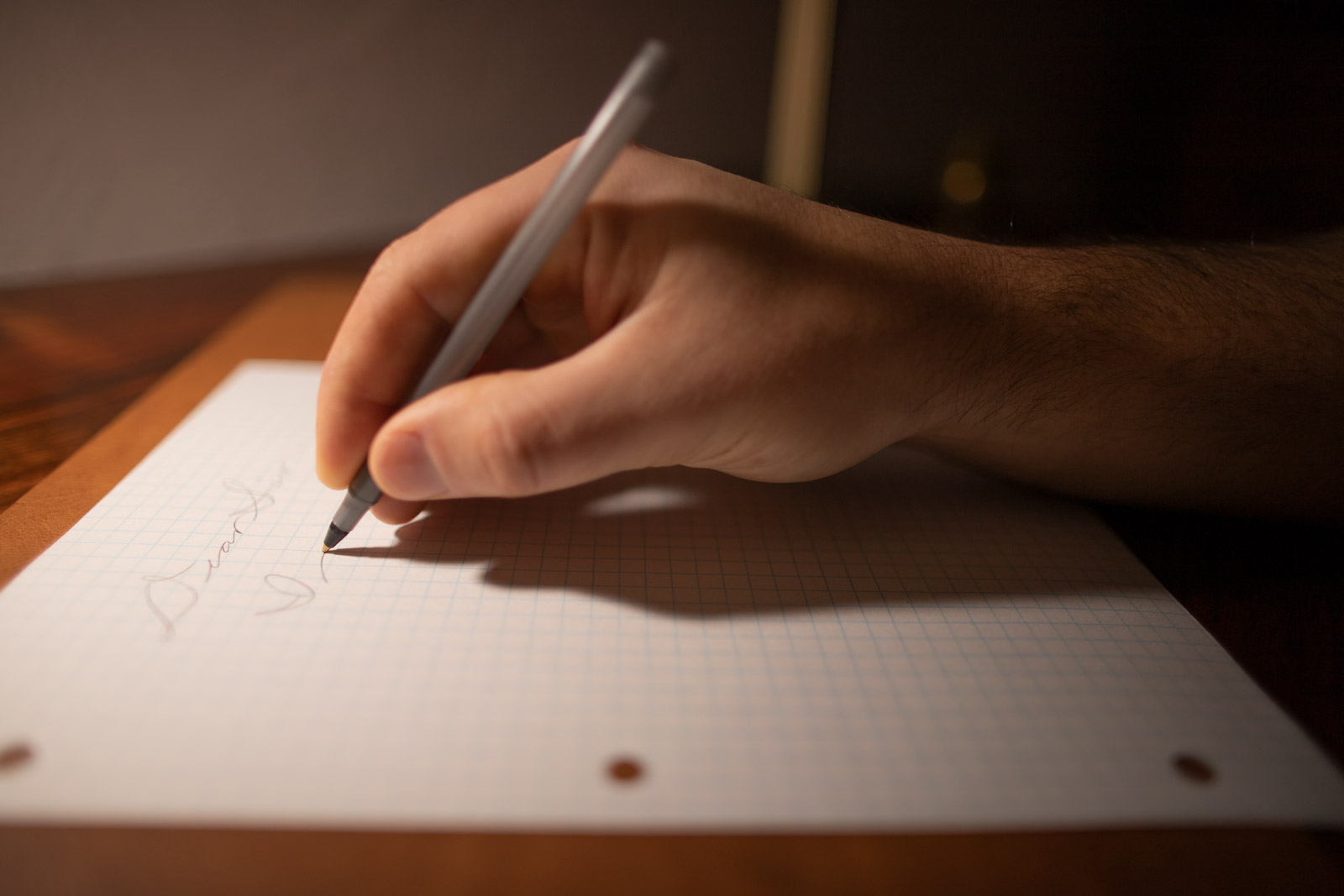Handwriting is important because of its link to our memories. It also has a direct effect on how we communicate. Therefore, if you want to become a great writer then you need to practice your hand writing skills from an early age.
If you are serious about learning to write well, the best thing that you can do is to try and take some lessons. There are lots of books which offer classes in handwriting. These can be used to learn to write better. However, you don’t always want to take a class. If you prefer, you could buy a book instead.
You should find the type of book that suits you. For example, there is a whole section dedicated to children. These books will teach you things such as how to hold your pen properly and when to use certain types of strokes. The same goes for adults who want to master their hand writing.
What Is Handwriting?
When you write, you use the muscles of your hand to make marks on paper. You have several different ways that you can write. Some people prefer to type while others like to draw letters with a pencil. If you want to learn how to write better, then this article will help you understand the basics.
If you’re interested in learning more, then you should read the following information. This includes everything from the history of handwriting to tips for improving your penmanship.
You might be wondering why some people’s handwriting looks so neat and clean, while other people’s writing seems messy. The answer is simply that some people are naturally good writers. Others need practice before they become skilled at writing.
There are many reasons for poor handwriting. For example, you could have a physical problem such as arthritis or diabetes. Or you may suffer from anxiety or depression. Whatever the case, there are plenty of things that you can do to improve your penmanship.
In fact, you don’t even have to buy expensive pens to get started. All it takes is time and patience. With these two things, you’ll soon find yourself making much neater and cleaner strokes.
Why Handwriting Is an Important Part?
Writing by hand has been around for thousands of years. Even though technology has made great strides over the past few decades, many people still prefer to write things down using a pen and paper instead of typing them into their smartphones. This can be seen in the way that most people use the term “handwriting.”
You may have noticed that the word “writing” usually includes the letters “w” and “r” while “printing” does not. The same thing applies to the terms “pen” and “paper.” If you look at the words closely, you will notice that the first letter of each one is different.
This is because the two forms of writing are very similar. For example, both can contain text, numbers, symbols, and pictures. However, the main difference between these two methods is how they are produced. Writing involves the act of moving your finger across the page, whereas printing uses a device that creates characters on the page.
When you type something into a computer, it is converted from digital information to printed text. However, when you write things down, you are actually converting information into physical objects. You’re creating a piece of paper with ink or paint.
What Are the Benefits of Having Good Handwriting?
When you write by hand, your brain is able to process information more efficiently than when you type on a keyboard. This means that you can focus better, and you’ll be less likely to make mistakes while typing. You also have the ability to slow down and really concentrate on what you’re doing.
You should always use proper penmanship, especially if you want to get into an academic field. If you don’t know how to properly form letters, you could end up with poor grades. So you need to practice and improve your handwriting skills.
There are many different ways to learn how to write correctly. For example, you can take a class at school, or you can watch videos online.
If you spend a lot of time using a computer, then you may benefit from learning how to write in cursive. Cursive is a style of writing that was popular throughout the Middle Ages. Today, it’s considered old fashioned, but you might enjoy seeing the beautiful lettering on some old books.
To help you out, here are three websites where you can find good resources about teaching yourself how to write in cursive.
Can You Improve Your Handwriting Later in Life?
If you have been looking to learn how to write better, then you might be interested in reading the article below. This guide will explain why learning cursive can help to improve your handwriting.
Writing is a skill that most of us need to master in order to communicate effectively with others. If you want to become a good writer, then you should start by practicing hand writing. Learning to write in cursive can also help you to develop fine motor skills.
Cursive is simply the way we used to write when we were children. However, it’s no longer taught in schools. As such, many people don’t know any other way of writing. But, there are a lot of benefits to being able to write in this style.
For example, you can use the lettering that you learned from cursive to create beautiful artwork, like paintings and posters. You’ll also find it easier to read text that has been written in this manner.
It’s important to note that you shouldn’t try to force yourself to learn cursive if you aren’t comfortable with it. Instead, just focus on making small changes to your handwriting over time.
In this post, we’ll explore 6 steps to improve your handwriting as an adult, including:
- Analyze your handwriting
- Write more
- Focus on consistency
- Experiment with writing utensils
- Learn traditional calligraphy
- Practice—a LOT.
FIRST, ANALYZE YOUR HANDWRITING
Before you can improve your handwriting, you first need to do a full audit of your writing.
Write a paragraph or two on paper by copying some text out of a book or from your phone. The more you write, the more you’ll be able to see patterns (good and bad). Take your time, but also try to write at your normal pace.
Once you’re done, you can start to analyze some things about your writing that you wish to improve:
- Spacing: Spacing between letters should be consistent, and spacing between words should also match up!
- Slant: Does the slant of your letters match, or is it all over the place, tilting left and then tilting right?
- Style: Are your letters formed the same, or does your style go all over the place?
- Height of letters: The heights of the lower case letters should all match up, and same with upper case letters.
- Consistent baseline for letters: Do your words line up on the bottom, or does it bounce around and go astray?
- Closing counters: I’m totally guilty of this one… when rushing, do you leave your O’s and similar letters open?
- Dotting your i’s: And cross your T’s… blah blah blah.
- etc
Once your hand recovers from writing so much (ouch!) try writing the same passage again, paying attention to what you want to improve. Here you can see improvements in my writing already. Sure, it took me longer, but the payoff is worth it!
IMPROVE YOUR HANDWRITING BY WRITING MORE
As a digital society, we tend to stick to our computers and phones when writing notes and emails. Our hand muscles for writing and drawing are going unused! Muscle memory is important for anything we do, even writing with pen and paper. If you don’t have regular practice, you’re going to have a harder time writing neatly.
Taking 10-15 minutes each day to write neatly and slowly can vastly improve your handwriting. Schedule time into your calendar to write a page or two (like right after a meal or when you wake up). Write as neatly as you can, about anything. Maybe even kill two birds with one stone by keeping a daily handwritten journal.
FOCUS ON CONSISTENCY TO IMPROVE YOUR HANDWRITING
Consistency is key. No matter what style you practice of your own handwriting, whether it’s cursive or not, you want to find a set of letter styles that you like to write and that look good together.
Practice with varying slopes and angles, heights of your letters, roundness of letters, etc. Once you start to see a style pattern in your handwriting, practice the same letter over and over again (literally fill one page with a’s and then the next with b’s) until you start to feel comfortable.

EXPERIMENT WITH PENS AND WRITING UTENSILS TO MAXIMIZE YOUR HANDWRITING IMPROVEMENT
There are seemingly countless brands and types of pens and writing utensils available. It’s up to you to find the style of pen that works best for the level of control, line thickness, pressure, and preference you prefer.
For example, some gel pens are too slippery and move too fast. A super fine pen may not work for someone with a heavy hand. Cheaper ballpoint pens may be clumpy and messy.
For basic handwriting, I prefer fine felt tip markers over any other type of writing utensil, because they provide more friction on the paper and help me slow down. You can even practice with an old fashioned #2 pencil in order to help you slow down to improve your handwriting.
LEARN TRADITIONAL CALLIGRAPHY TO IMPROVE YOUR HANDWRITING SKILLS
I know this seems counter-intuitive. It’s like I’m telling you to run before you can walk. However, I saw vast improvements with my hand lettering after I studied calligraphy. Learning how to form letters traditionally can help you understand consistency and anatomy.
My recommendation: learn basic strokes of brush calligraphy.
Grab a calligraphy book that isn’t for pointed-pen calligraphy (I recommend Calligraphy for Dummies) and a $1 grid composition book or cheap graph paper. Studying this book helped me slow down (super important!!) and focus on consistent letterforms.
FINALLY, PRACTICE. PRACTICE. PRACTICE.
I can’t stress how important regular practice is! If improving your handwriting sounds like a chore to you, try to make it fun:
- Journal daily—with pen and paper.
- Write letters to your friends (because really, everyone would love to receive a handwritten letter!).
- Write out your grocery list as neatly as possible.
- Leave handwritten notes in your kids’ lunches.
- Take notes—even sketchnotes—when listening to a podcast or watching an educational YouTube video.
- Start a bullet journal.
Even if you can’t dedicate time to daily practice, make it a point to write neatly for everything you write down—notes at work or school, filling out forms, etc.
All in all, slow down, pay attention, and work to find the handwriting style that is best for you, along with your preferred pen type and paper combination.

